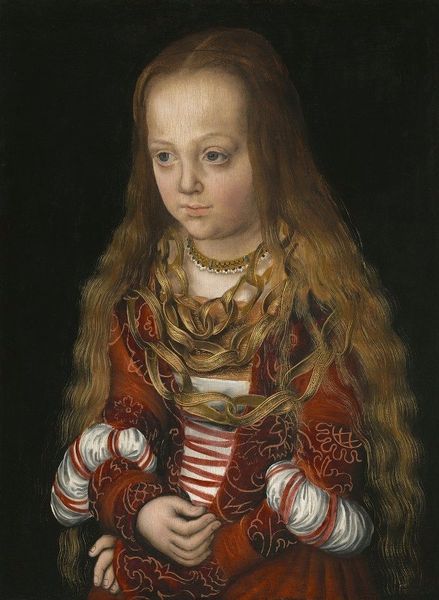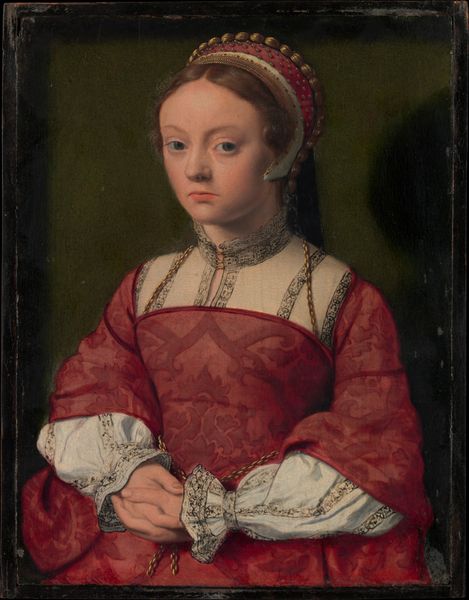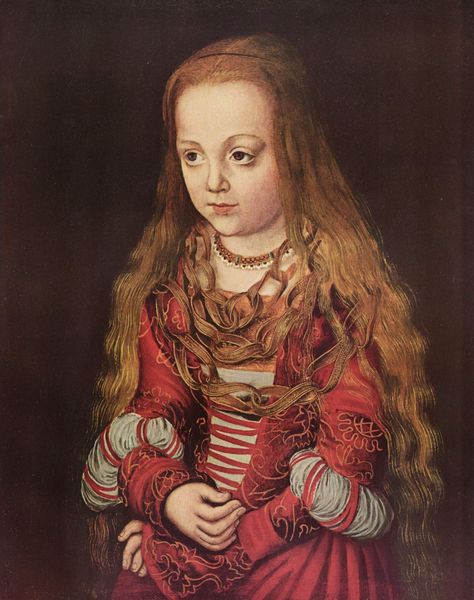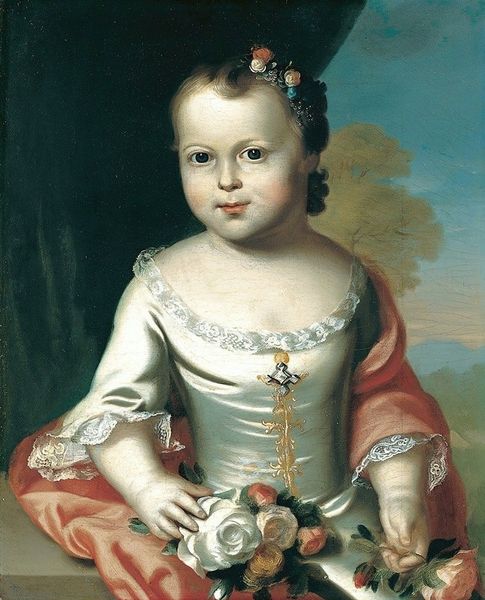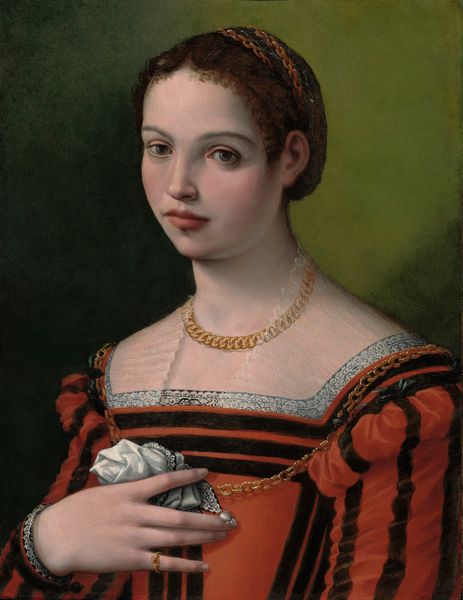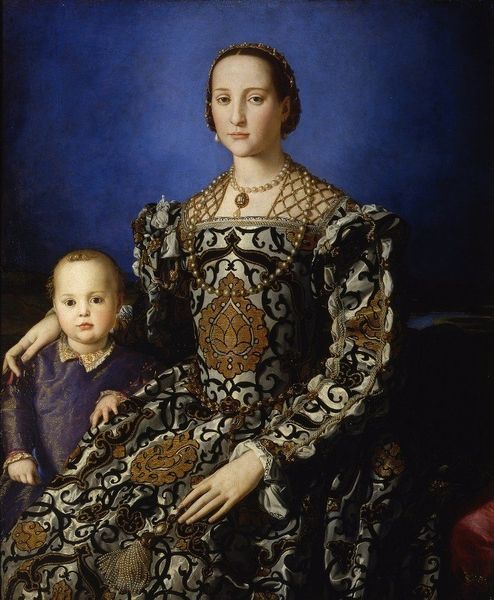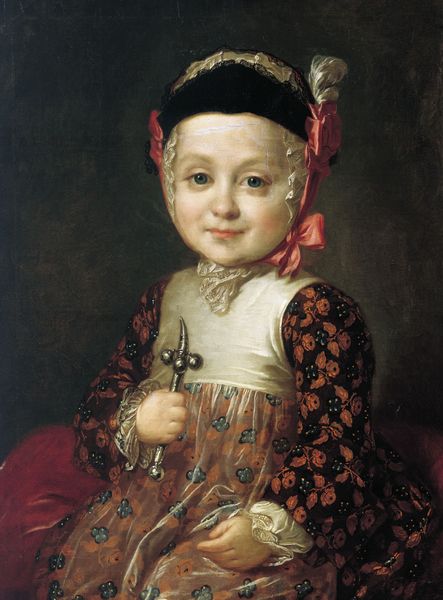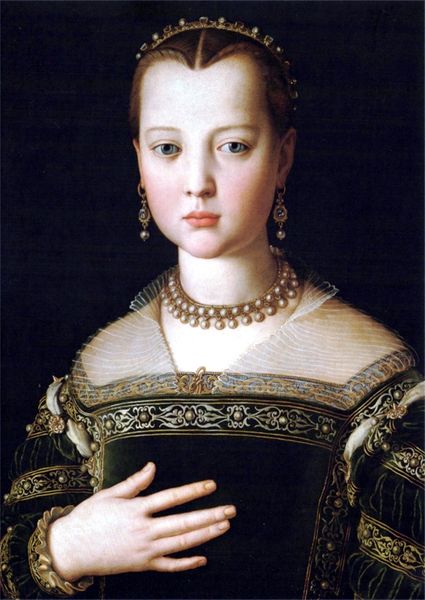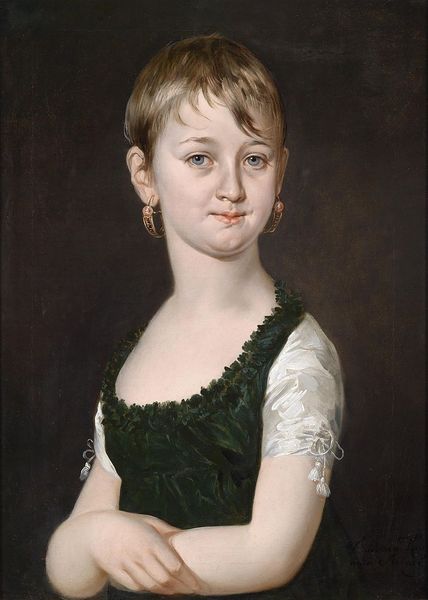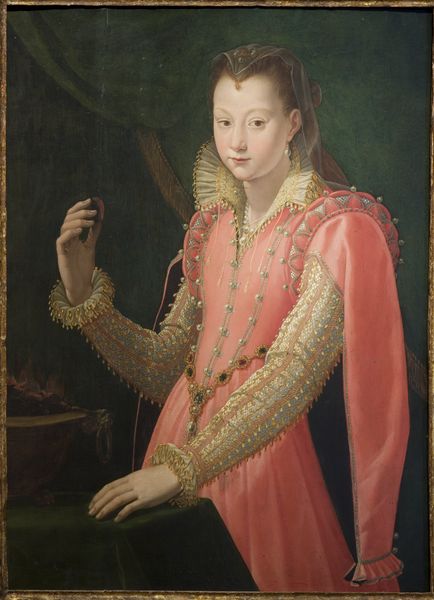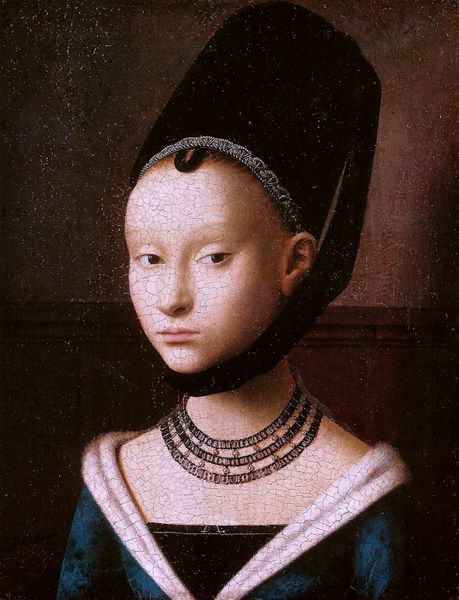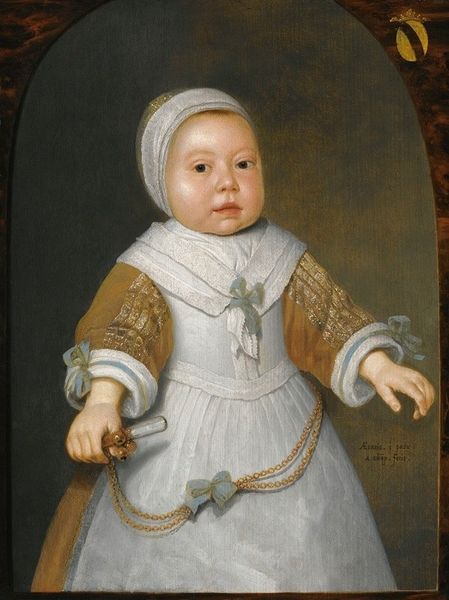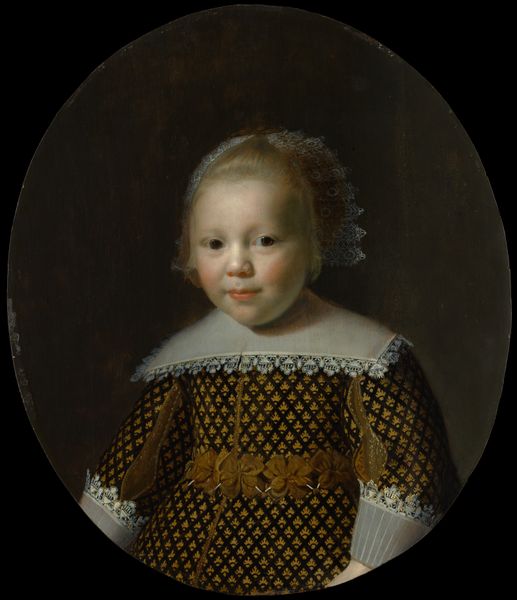
painting
#
portrait
#
figurative
#
painting
#
mannerism
#
portrait reference
#
portrait head and shoulder
#
animal portrait
#
animal drawing portrait
#
portrait drawing
#
facial portrait
#
italian-renaissance
#
portrait art
#
fine art portrait
#
celebrity portrait
#
digital portrait
Copyright: Public Domain: Artvee
Curator: This striking portrait is Agnolo Bronzino's "Bia Di Cosimo De' Medici," painted between 1542 and 1545. Editor: There’s something almost ethereal about her; the cool, porcelain skin against that intensely blue backdrop evokes a sense of detachment, a carefully constructed stillness. Curator: It's fascinating how Bronzino uses material signifiers here. The intricate detailing of her dress – the sumptuous satin, the pearls, the heavy gold chains – speak volumes about the Medici family’s wealth and power during the High Renaissance. You see a deliberate presentation of status and access. Editor: Absolutely. It’s hard not to see her as a symbol of the dynasty's aspirations, particularly poignant given Bia’s very short life; she died at around age five. Considering the cultural emphasis on lineage, gender and representation in 16th-century Florence, this idealized portrait, crafted posthumously, transcends a simple likeness. It becomes a loaded image about family legacy. The pallid coloring lends a haunting feel to it, knowing she has already passed. Curator: Consider also the means by which Bronzino achieved such lifelike qualities. The paint itself, ground with specific pigments to obtain these colors, layered meticulously—he exploits his own masterful craftsmanship here as much as showcasing the girl's status. Each step reveals his investment. Editor: I agree, the execution is exquisite, yet I also can’t shake the sense of an almost uncanny perfection. This idealized depiction served very specific socio-political purposes at a time of dynastic insecurity in Florence, masking, perhaps, the emotional realities of her loss behind the opulence. Curator: Indeed, but that's exactly the game of court portraiture. Bronzino's expert handling of the physical properties available allowed him and, crucially, the Medicis to craft just that appearance. His control over these processes solidifies their carefully controlled public perception. Editor: Thinking about Bronzino, Bia, and us now viewing this painting centuries later – it layers meaning upon meaning. Even as we focus on formal craftsmanship, it cannot stand outside how cultural and familial powers used representations to construct and sustain identity. Curator: It serves as a poignant reminder that artistic practice isn't purely about aesthetics but reflects very particular material means that often aim at molding larger narratives. Editor: Ultimately, the portrait invites us to grapple with enduring tensions between artistic representation, dynastic power, and the deeply personal tragedies that history often obscures.
Comments
No comments
Be the first to comment and join the conversation on the ultimate creative platform.
